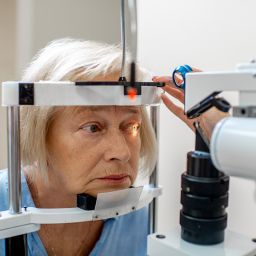
Diabetic Retinopathy
Diabetic retinopathy is a condition that progressively develops in diabetic patients and causes gradual blindness in both eyes due to the damage of the retina. Patients have who have had diabetes for five years stand a 25% chance of developing non-proliferative diabetic retinopathy (NPDR).
This probability increases to 60% for people who have had diabetes for over ten years. According to eye specialists, diabetic retinopathy typically occurs in both Type 1 and Type 2 diabetes, and features four stages, namely:
- Mild NPDR
- Moderate NPDR
- Severe NPDR
- PDR or Proliferative Diabetic Retinopathy
Risk Factors
Risk factors relating to diabetic retinopathy are identical to factors that aggravate diabetes, which include:
- Obesity: Excess fat within the blood and body tissue makes it harder for insulin to regulate blood sugar levels effectively.
- Inactivity: Inactivity results in slow body metabolism, subsequently favoring high blood sugar levels
- Family History: Genetic factors affecting the pancreas cause inadequate production of insulin resulting in abnormally high blood sugar levels
- Age: The pancreas ability to produce adequate insulin decreases as a person get older
- High Blood Pressure: The super-thin blood vessels within the retina rapture more easily as a result of the abnormally high blood pressure
- Ethnicity: Research shows that people from African-American, Hispanic, and Native American ethnic have a higher risk of developing diabetes and diabetic retinopathy.
Symptoms
As a condition that affects the retina, symptoms of diabetic retinopathy primarily revolve around vision and include:
- Dark/grey Spots or transparent string-like apparitions that float in your vision in one or both eyes. These apparitions are commonly known as floaters and typically occur at the onset of the diabetic retinopathy, i.e., mild NPRT
- Vision that fluctuates between clarity and blurring, whereby the blurring can affect one or both eyes. This symptom typically occurs in moderate NPRT.
- The gradual loss of color in your vision, a symptom that occurs in moderate to severe NPRT.
- Blank areas in your field of vision that progressively gets worse. This symptom typically occurs in severe NPRT.
- Total Blindness, which marks the final stage of diabetic retinopathy.
Complications
As with most medical conditions, diabetic retinopathy is often accompanied by other complications conditions, which include:
- Vitreous Hemorrhage: Blood from ruptured blood vessels can find its way into the eye’s vitreous region, causing dark spots to appear in your vision. Furthermore, massive blood loss from multiple ruptures can cause a complete loss of vision. However, such vision loss usually clears up within a month.
- Retinal Detachment : Retinal detachment occurs during the repair of ruptured blood vessels located deep within retinal tissue. The scar tissue that forms can push out photoreceptor cells to the front, thereby severing their connections to the optic nerve. When this happens, you experience blank areas in your field of vision and intermittent flashes of light due to these severed nerve endings at the retina’s back.
- Glaucoma: The accumulation of scar tissue over the retina can hinder the renewal and regulation of the vitreous fluid in the eye resulting in pressure build-up within the eye. This build-up then causes migraines due to the pressure exerted on the optic nerve.
Prevention and Treatment
Effective management of diabetes is the primary method of preventing and halting the progress of diabetic retinopathy and it involves the following:
- Daily scheduled monitoring of your blood sugar to ensure consistently normal levels.
- Taking diabetic medication and insulin injections at precise time intervals to avoid high blood sugar
- Taking a fiber-rich diet that regulates the absorption of sugar into the blood from any food you have consumed
- Engaging in easy physical activities daily such as walking
- Avoiding cigarettes and alcohol, which adversely affect your body’s ability to regulate blood sugar and blood pressure effectively.
Treatment of diabetic retinopathy, on the other hand, mainly involves two medical procedures, namely:
- Laser Photocoagulation
Laser light is used to stimulate tissue repair in areas of the retina affected by diabetic retinopathy. Healing of the retina typically results in the restoration of vision. - Vitrectomy
Vitrectomy involves the surgical removal of the vitreous fluid to eradicate the array of visual defects resulting from diabetic retinopathy.
While it is almost certain that you will develop retinopathy if you have diabetes, you can effectively delay the condition’s onset by making healthy lifestyle choices. However, it is prudent to have a yearly eye checkup to allow an optician to determine diabetic retinopathy onset when you have diabetes.





